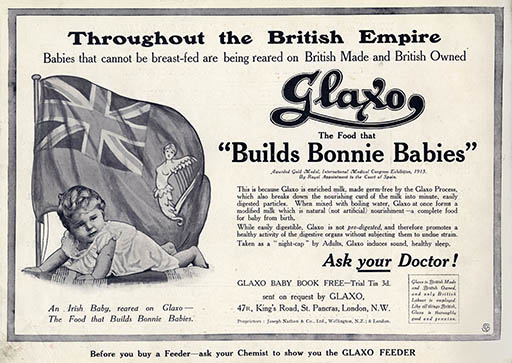2.4 Babies and the state
Despite the development of local children’s services, healthcare, particularly doctors, remained expensive and one concern of local health authorities was that they came into contact with sickly infants too late to help them. In order to know how many babies were born, where they were and which ones were at risk (usually in the poorest areas), the Notification of Births Act was passed in 1907. This legislation allowed local authorities to require families to register a birth within 48 hours. In 1915 this was made compulsory across the four nations of the UK allowing health visitors to identify underweight or unwell babies in the first ten days of their life.
As you can see, moving forward along a timeline from our original artefact, the topic of bottle feeding can lead us to ideas of public health, local provision, erroneous but powerful concepts of social degeneracy and the intervention of the state into the earliest days of family life. You have not even considered the growing role of large manufacturers and brands in this market.
Activity 7
Have a look at this advertisement and notice the year of publication. What topics or concerns might a historian identify in this evidence?
Tip: Notice the flag symbolism.
Discussion
Here you can see the clear impact of nationalism and the wartime context; there is a real emphasis on the United Kingdom with both the Union Flag and the Irish harp represented, and ‘British made’ and ‘British owned’ are promoted as hallmarks of quality as well as being patriotic. The advertisement unites babies across the British Empire and suggests that healthy babies are ‘built’ with the right food. We might also notice the appeal to science and medicine in ‘germ-free’, ‘ask your doctor’ and the use of the word ‘particles’ instead of the phrase powdered milk. Glaxo were the biggest suppliers of powdered milk to local health authorities so were probably anxious to use different language when appealing to the private customer (note the implicit promise of an undisturbed night for parents!).

